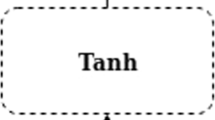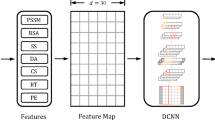Abstract
In living organisms, proteins are considered as the executants of biological functions. Owing to its pivotal role played in protein folding patterns, comprehension of protein structure is a challenging issue. Moreover, owing to numerous protein sequence exploration in protein data banks and complication of protein structures, experimental methods are found to be inadequate for protein structural class prediction. Hence, it is very much advantageous to design a reliable computational method to predict protein structural classes from protein sequences. In the recent few years there has been an elevated interest in using deep learning to assist protein structure prediction as protein structure prediction models can be utilized to screen a large number of novel sequences. In this regard, we propose a model employing Energy Profile for atom pairs in conjunction with the Legion-Class Bayes function called Energy Profile Legion-Class Bayes Protein Structure Identification model. Followed by this, we use a Thompson Optimized convolutional neural network to extract features between amino acids and then the Thompson Optimized SoftMax function is employed to extract associations between protein sequences for predicting secondary protein structure. The proposed Energy Profile Bayes and Thompson Optimized Convolutional Neural Network (EPB-OCNN) method tested distinct unique protein data and was compared to the state-of-the-art methods, the Template-Based Modeling, Protein Design using Deep Graph Neural Networks, a deep learning-based S-glutathionylation sites prediction tool called a Computational Framework, the Deep Learning and a distance-based protein structure prediction using deep learning. The results obtained when applied with the Biopython tool with respect to protein structure prediction time, protein structure prediction accuracy, specificity, recall, F-measure, and precision, respectively, are measured. The proposed EPB-OCNN method outperformed the state-of-the-art methods, thereby corroborating the objective.













Similar content being viewed by others
Explore related subjects
Discover the latest articles and news from researchers in related subjects, suggested using machine learning.References
Pearce R, Zhang Y (2021) Toward the solution of the protein structure prediction problem. J Biol Chem. https://doi.org/10.1016/j.jbc.2021.100870
Strokach A, Becerra D, Corbi-Verge C, Perez-Riba A, Kim PM (2020) Fast and flexible protein design using deep graph neural networks. Cell Syst 11(4):402–411. https://doi.org/10.1016/j.cels.2020.08.016
Lia S, Yub K, Wang D, Zhang Q, Liu ZX, Zhao L, Cheng H (2020) (2020) Deep learning based prediction of species-specific protein Sglutathionylation sites. Biochim Biophys Acta (BBA) Proteins Proteomics 1868(7):1–6. https://doi.org/10.1016/j.bbapap.2020.140422
Kandathil SM, Greener JG, Jones DT (2019) Recent developments in deep learning applied to protein structure prediction. Proteins Struct Funct Bioinform. https://doi.org/10.1002/prot.25824
Xu J, Wang S (2019) Analysis of distance-based protein structure prediction by deep learning in CASP13. Proteins Struct Funct Bioinform. https://doi.org/10.1002/prot.25810
Lai JK, Ambia J, Wang Y, Barth P (2017) Enhancing structure prediction and design of soluble and membrane proteins with explicit solvent-protein interactions. Structure 25(7):1758–1770. https://doi.org/10.1016/j.str.2017.09.002
Igashov I, Pavlichenko N, Grudinin S (2021) Spherical convolutions on molecular graphs for protein model quality assessment. Mach Learn Sci Technol. https://doi.org/10.1088/2632-2153/abf856
Nguyen SP, Li Z, Xu D, Shang Y (2017) New Deep Learning Methods for Protein Loop Modeling. IEEE Transactions on Computational Biology and Bioinformatics 16(2):596–606. https://doi.org/10.1109/TCBB.2017.2784434
Pearce R, Zhang Y (2021) Deep learning techniques have significantly impacted protein structure prediction and protein design. Struct Biol 68(68):104–207. https://doi.org/10.1016/j.sbi.2021.01.007
Wang S, Li Z, Yu Y, Xu J (2017) Folding membrane proteins by deep transfer learning. Cell Syst 5(3):202–211. https://doi.org/10.1016/j.cels.2017.09.001
Tsuchiya Y, Tomii K (2020) Neural networks for protein structure and function prediction and dynamic analysis. Biophys Rev 12(2):569–573. https://doi.org/10.1007/s12551-020-00685-6
AlQuraishi M (2021) Machine learning in protein structure prediction. Curr Opin Chem Biol Egypt J Med Hum Genet 65(65):1–8. https://doi.org/10.1016/j.cbpa.2021.04.005
Torrisi M, Pollastri G, Le Q (2020) Deep learning methods in protein structure prediction. Comput Struct Biotechnol J 18(18):1301–1310. https://doi.org/10.1016/j.csbj.2019.12.011
Afify HM, Abdelhalim MB, Mabrouk MS, Sayed AY (2021) Protein secondary structure prediction (PSSP) using different machine algorithms. Egypt J Med Hum Genet 22(1):1–10. https://doi.org/10.1186/s43042-021-00173-w
Adhikari B (2020) A fully open-source framework for deep learning protein real-valued distances. Sci Rep. https://doi.org/10.1038/s41598-020-70181-0]
Gao M, Zhou H, Skolnick J (2020) DESTINI: a deep-learning approachto contact-driven protein structureprediction. Sci Rep. https://doi.org/10.1038/s41598-019-40314-1
Zhong W, Gu F (2020) Predicting local protein 3D structures using clustering deep recurrent neural network. ACM Trans Comput Biol Bioinform. https://doi.org/10.1109/TCBB.2020.3005972
Liu Z, Gong Y, Bao Y, Guo Y, Wang H, Lin GN (2021) TMPSS: a deep learning-based predictor for secondary structureand topology structure prediction of alpha-helical transmembrane proteins. Front Bioeng Biotechnol. https://doi.org/10.3389/fbioe.2020.629937
Yufang Q, Xiaoqi Z, Jun W, Ming C, Changjie Z (2015) Prediction of protein structural class based onLinear predictive coding of PSI-BLAST profiles. Open Life Sci 10:529–536. https://doi.org/10.1515/biol-2015-0055
Chen TR, Juan SH, Huang YW, Lin YC, Lo WC (2021) A secondary structure-based position-specific scoring matrix applied to the improvement in protein secondary structure prediction. PLoS ONE. https://doi.org/10.1371/journal.pone.0255076
Bao W, Yuan CA, Zhang Y, Han K, Nandi AK, Honig B, Huang DS (2017) Mutli-features prediction of protein translational modification sites. IEEE/ACM Trans Comput Biol Bioinform 15(5):1453–1460. https://doi.org/10.1109/TCBB.2017.2752703
Spencer M, Eickholt J, Cheng J (2014) A deep learning network approach to ab initio protein secondary structure prediction. IEEE/ACM Trans Comput Biol Bioinform 12(1):103–112. https://doi.org/10.1109/TCBB.2014.2343960
Gao W, Mahajan SP, Sulam J, Gray JJ (2020) Deep learning in protein structural modeling and design. Patterns. https://doi.org/10.1016/j.patter.2020.100142
Tunyasuvunakoo K, Adler J, Wu Z, Green T, Zielinski M (2021) Highly accurate protein structure predictionfor the human proteome. Nature. https://doi.org/10.1038/s41586-021-03828-1
Bouatta N, Sorger P, AlQuraishi M (2021) Protein structure prediction by AlphaFold2: Are attention and symmetries all you need? Acta Crystallogr Sect D Struct Biol 77(8):982–991. https://doi.org/10.1107/S2059798321007531
Igashov I, Pavlichenko N, Grudinin S (2021) Spherical convolutions on molecular graphs for protein model quality assessment. Mach Learn Sci Technol 2(4):045005. https://doi.org/10.1088/2632-2153/abf856
Xu Y, Verma D, Sheridan RP, Liaw A, Ma J, Marshall NM, McIntosh J, Sherer EC, Svetnik V, Johnston JM (2020) Deep dive into machine learning models for protein engineering. J Chem Inf Model 3(60):2773–2790. https://doi.org/10.1021/acs.jcim.0c00073
Senior AW, Evans R, Jumper J, Kirkpatrick J, Sifre L (2020) Improved protein structure prediction usingpotentials from deep learning. Nature 8(428):706–710. https://doi.org/10.1038/s41586-019-1923-7
Evangelia IZ (2017) Prediction of protein function usinga deep convolutional neural networkensemble. Peer J Comput Sci. https://doi.org/10.7717/peerj-cs.124
Yang J, Zhang Y (2019) Protein structure and function prediction using I-TASSER. Curr Protocols Bioinform. https://doi.org/10.1002/0471250953.bi0508s52
Mehmood S, Imran M, Ali A, Munawar A, Khaliq B, Anwar F, Saeed Q, Buck F, Hussain S, Saeed A, Ashraf MY, Akrem A (2020) Model prediction of a Kunitz-type trypsin inhibitor protein from seeds of Acacia nilotica L. with strong antimicrobial and insecticidal activity. Turk J Biol. https://doi.org/10.3906/biy-2002-20
Alakuş TB, Türkoğlu İ (2021) A novel Fibonacci hash method for protein family identification by usingrecurrent neural networks. Turk J Electr Eng Comput Sci 29(1):370–386. https://doi.org/10.3906/elk-2003-116
Istifli ES, Tepe AŞ, Netz PA, Sarikürkcü C, Kilic IH, Tepe B (2021) Determination of the interaction between the receptor binding domain of 2019-nCoV spike protein, TMPRSS2, cathepsin B and cathepsin L and glycosidic and aglycon forms of some flavonols. Turk J Biol. https://doi.org/10.3906/biy-2104-51
Yilmaz C, Gok M (2021) System designs to perform bioinformatics sequence alignment. Turk J Electr Eng Comput Sci. https://doi.org/10.3906/elk-1105-22
Sureyya Rifaioglu A, Doğan T, Jesus Martin M, Cetin-Atalay R, Atalay V (2019) DEEPred: automated protein function prediction with multi-task feed-forward deep neural networks. Sci Rep. https://doi.org/10.1038/s41598-019-43708-3
Funding
No funds, grants, or other support was received.
Author information
Authors and Affiliations
Contributions
VN contributed to the conceptualization; methodology; formal analysis and investigation; writing—original draft preparation; writing—review and editing; resources; MS was involved in the supervision.
Corresponding author
Ethics declarations
Conflict of interest
The authors have no financial or proprietary interests in any material discussed in this article.
Data availability
Yes.
Code availability
Yes.
Additional information
Publisher's Note
Springer Nature remains neutral with regard to jurisdictional claims in published maps and institutional affiliations.
Rights and permissions
Springer Nature or its licensor holds exclusive rights to this article under a publishing agreement with the author(s) or other rightsholder(s); author self-archiving of the accepted manuscript version of this article is solely governed by the terms of such publishing agreement and applicable law.
About this article
Cite this article
Nallasamy, V., Seshiah, M. Energy Profile Bayes and Thompson Optimized Convolutional Neural Network protein structure prediction. Neural Comput & Applic 35, 1983–2006 (2023). https://doi.org/10.1007/s00521-022-07868-0
Received:
Accepted:
Published:
Issue Date:
DOI: https://doi.org/10.1007/s00521-022-07868-0




